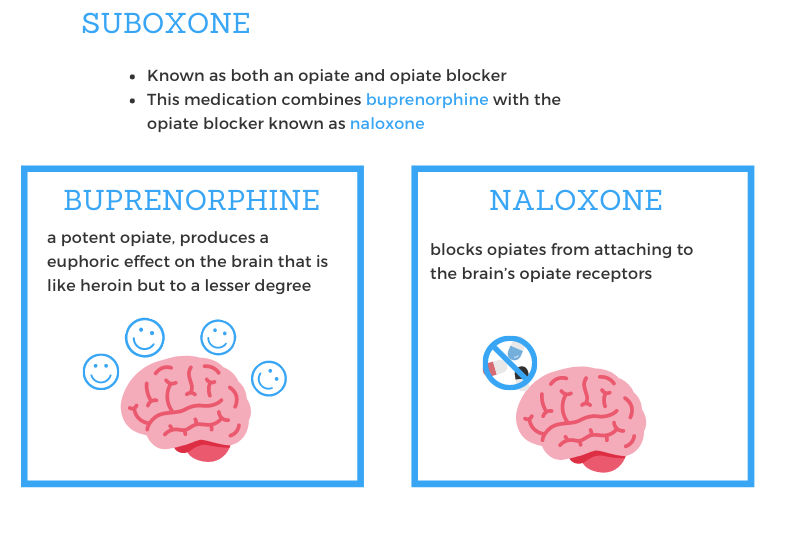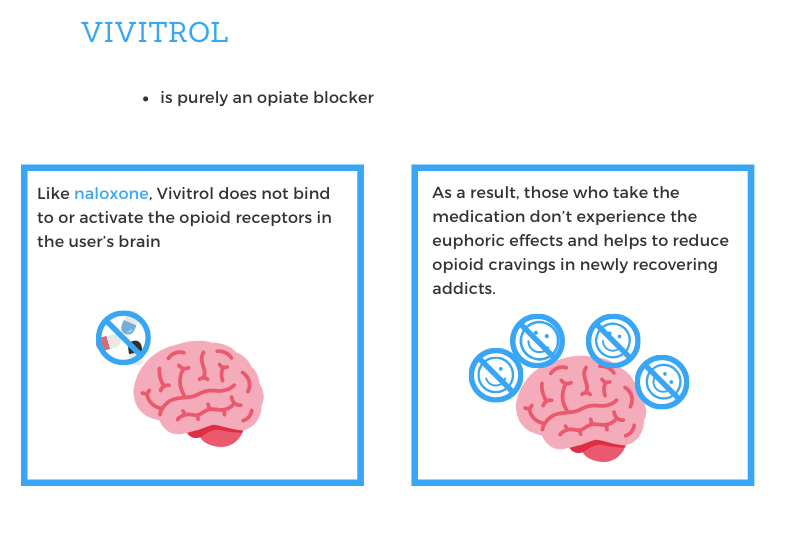An increasing number of drug treatment facilities are employing medically assisted treatment options to combat substance abuse. The two medications that are most commonly used are Buprenorphine and Vivitrol. While Buprenorphine can be extremely effective as a part of an addict’s treatment plan, Vivitrol has become more of an attractive option. If you are considering medication-assisted therapy, it is important to understand the ways that the differences between the two medications in order to make a conscious decision.
The Major Differences
The first noticeable difference between Buprenorphine and Vivitrol is their chemical makeup. Buprenorphine is known as both an opiate and opiate blocker. This medication combines buprenorphine with the opiate blocker known as naloxone. Buprenorphine, a potent opiate, produces a euphoric effect on the brain that is like heroin but to a lesser degree while the naloxone blocks opiates from attaching to the brain’s opiate receptors. While effective when taken under the supervision of medical personnel, there is a significant possibility of becoming addicted to Buprenorphine. Buprenorphine is a very powerful opioid and can produce withdrawal symptoms that can be worse in comparison to those found in opioid drugs. Use of Buprenorphine must cease if withdrawal symptoms are present.

In contrast, Vivitrol is purely an opiate blocker. Like naloxone, Vivitrol binds to opioid receptors in the brain in the same manner as drugs like heroin bind to receptors. Like naloxone, Vivitrol does not bind to or activate the opioid receptors in the user’s brain. As a result, those who take the medication don’t experience the euphoric effects and helps to reduce opioid cravings in newly recovering addicts. Without opiates as part of its chemical makeup, the possibilities of becoming addicted to Vivitrol is virtually non-existent.

Method of Administration
A second difference between these medications is the way they are administered to patients. Buprenorphine is a medication which patients take sublingually under the tongue or in their cheek. This medication is taken daily, and dosages are adjusted according to a variety of factors. These can include the patient’s bodily response to Buprenorphine, the types of opioid drugs that were abused and the patient’s level of dependence among other factors. The constant re-adjusting of medication levels and daily dosing can become a drawback as a part of a comprehensive treatment plan.
By contrast, Vivitrol is administered via shot once monthly by a healthcare provider. As part of a Vivitrol program, the drug can only be administered once all opioid drugs have completely cleared one’s system. This waiting period usually is between 7 to 10 days or longer depending on the level of abuse. Unlike Buprenorphine, the effects of the drug are experienced for a longer duration. Since the drug only needs to be taken on a monthly basis, there can be more of an emphasis on counseling, therapy, and other treatment methods.
Are You Looking for Vivitrol Treatment in Florida?
If you or a loved one are considering drug treatment that includes Vivitrol, you are making a great choice. Comprehensive Wellness Centers features quality, well-rounded treatment programs that feature Vivitrol treatment in addition to both traditional and holistic approaches. Our experienced and compassionate staff works with you to create a drug treatment program that suits you. Don’t delay, call Comprehensive Treatment Centers toll-free right now.













